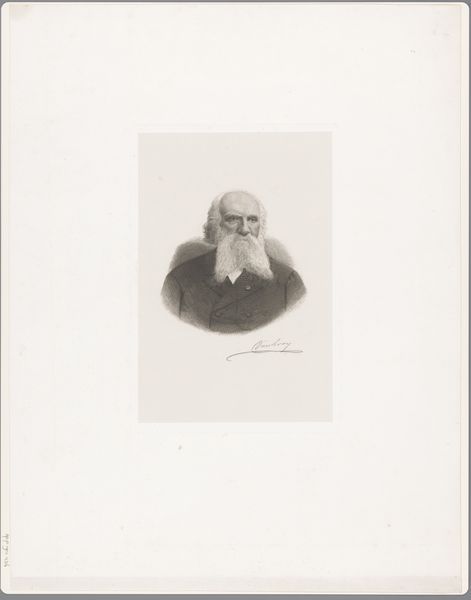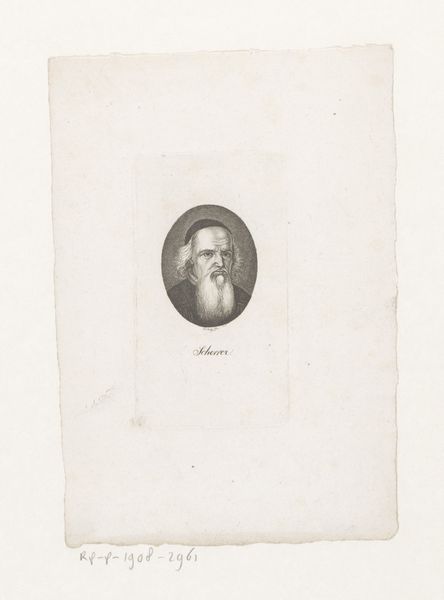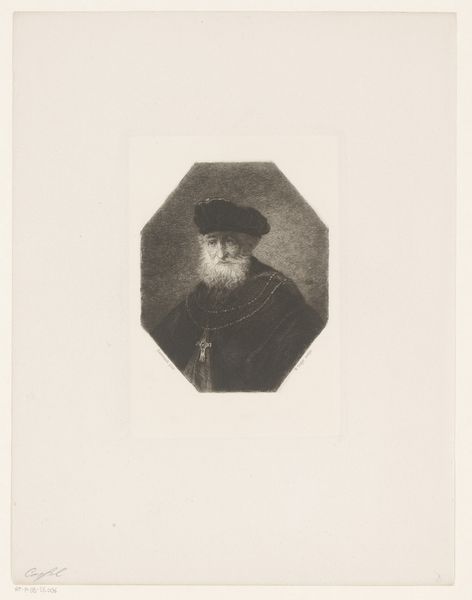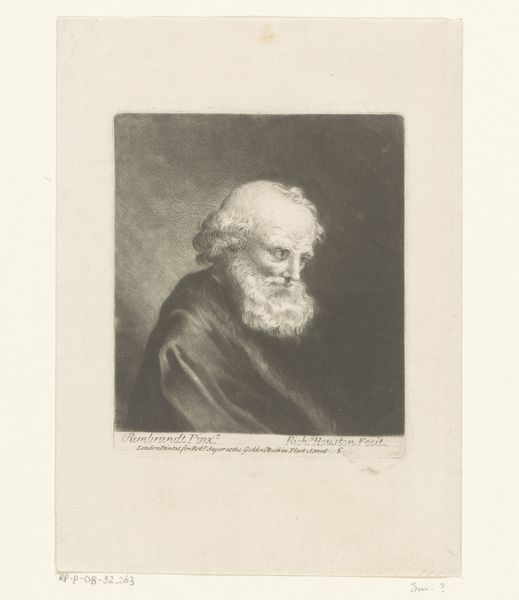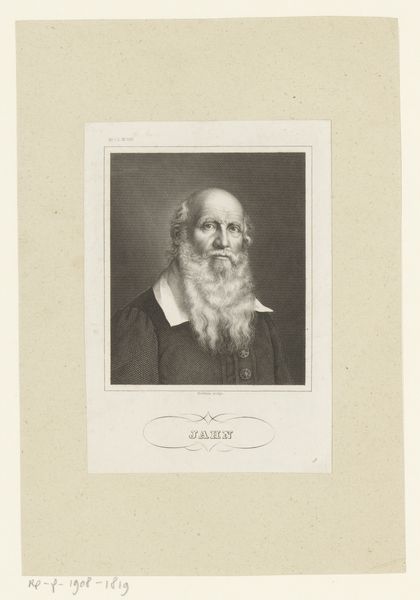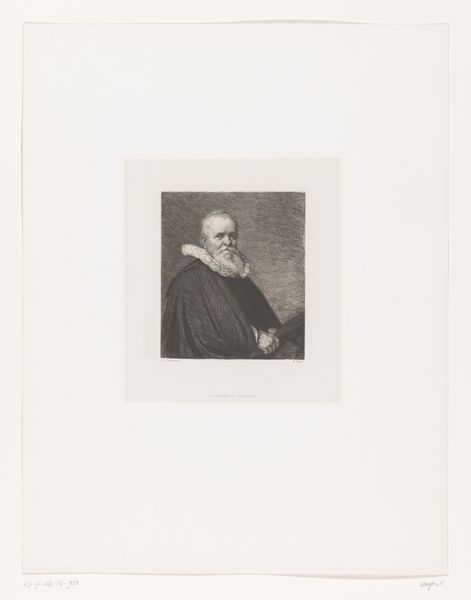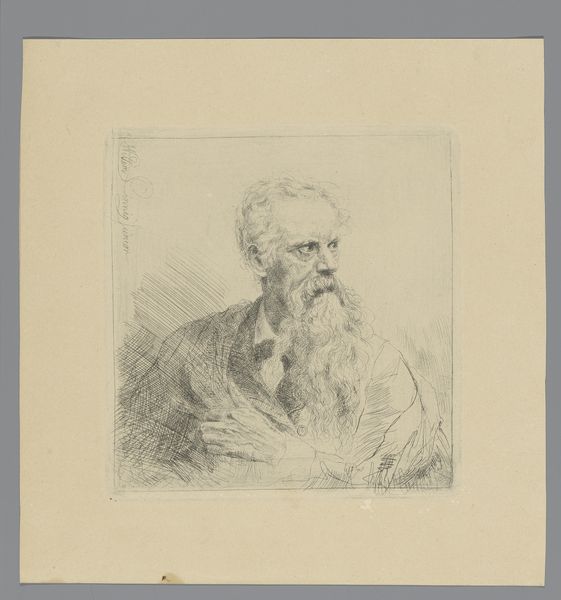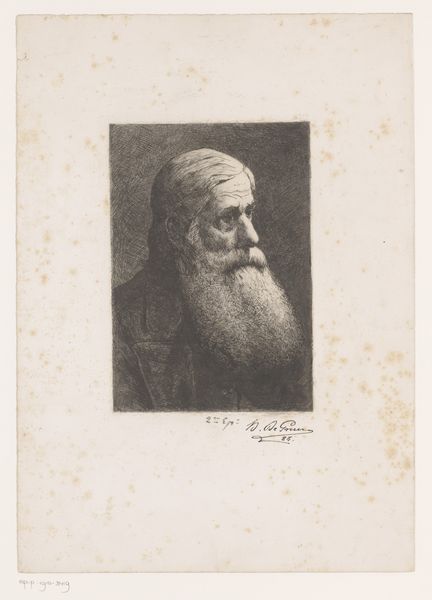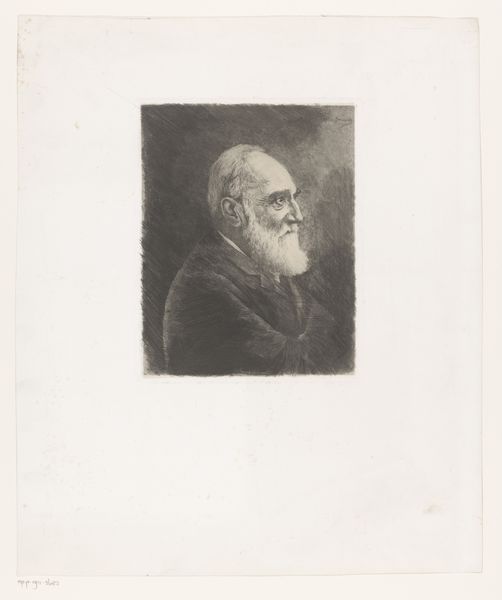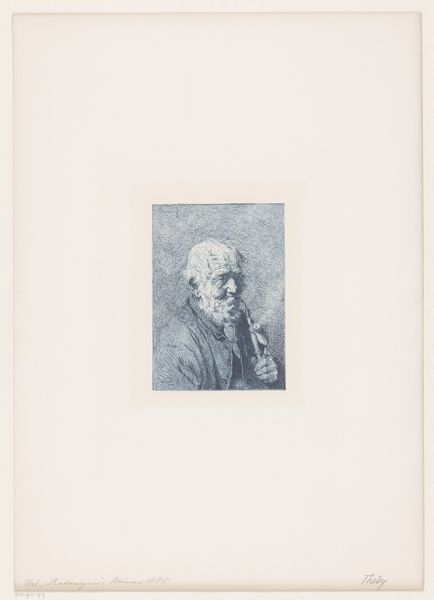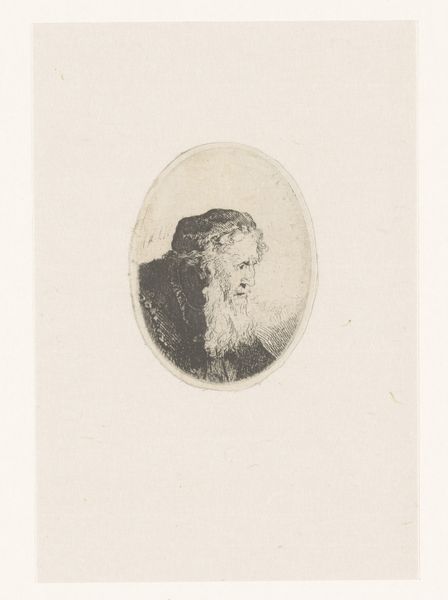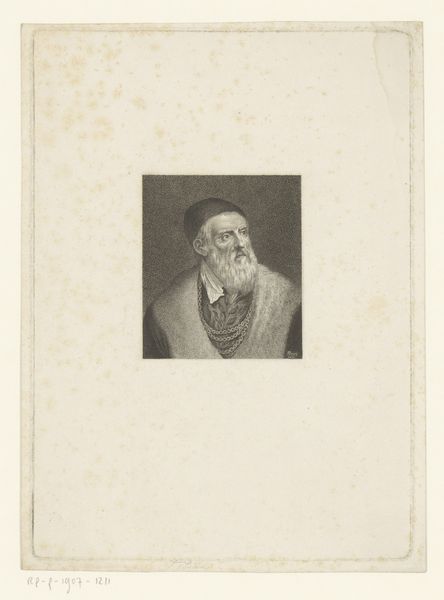
#
portrait
# print
#
realism
Dimensions: height 195 mm, width 154 mm
Copyright: Rijks Museum: Open Domain
Editor: Here we have Nikolay Semyonovich Mosolov's "Portrait of an Old Man," created sometime between 1857 and 1914, using printmaking techniques. It’s a somber portrait, the greyscale giving it an austere feel. What stands out to you when you look at this piece? Curator: I'm drawn to consider the physical process of creating this print. We're looking at the results of labor, the manipulation of materials – the plate, the ink, the paper. How does the choice of printmaking as a medium impact the way we view this man? Was printmaking meant to democratize images, and therefore make him relatable? Editor: That's interesting. I hadn't considered the implications of choosing printmaking. So, it is a portrait and could highlight status, but is it also trying to make this subject accessible? Curator: Precisely! What was the artist trying to achieve through that conscious decision of reproducibility? The consumption of images, their distribution... these were all radically shifting during this period. The rise of printmaking coincides with industrialization. Were these affordable portraits meant to celebrate the working class or offer a commentary on labor, I wonder? Editor: It almost flattens him, making him anonymous through the mechanical means of production...a product, perhaps? I hadn’t thought about portraits that way before. Curator: Absolutely. And the lack of vibrant colors… the artist chose, possibly deliberately, to deprive the work of material allure? It brings the process to the foreground and, in effect, can remove him of individual prestige. Editor: So, understanding the process allows us to see the artwork less as a depiction of one particular old man and more as an exploration of labour and status within a rapidly industrializing society. Curator: Precisely. The social context becomes paramount. Seeing art as embedded in, not separate from, the material world is eye-opening, right? Editor: It definitely changes the way I view portraits; I see him as a worker but maybe everyone's just a worker when you get down to the means of producing artwork!
Comments
No comments
Be the first to comment and join the conversation on the ultimate creative platform.
